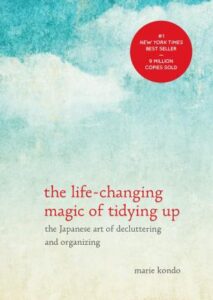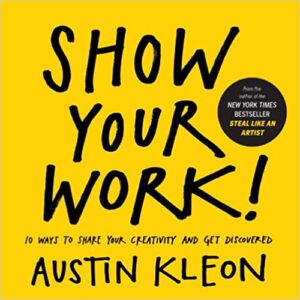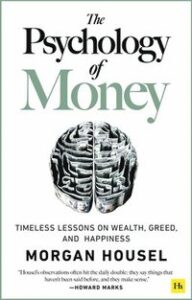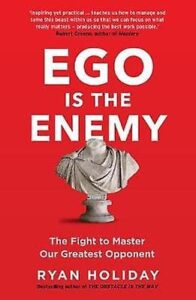Introduction
Putting ones house in order positively affect all areas of ones life, such as work, family and stress. This book teaches the KonMari method which is used to tidy up and decluttering ones homes and transform ones life. The book teaches what things to keep, what things to discard, how to store items and the relationship we should have with our items.
What we own becomes how we live life. By discarding old and unwanted things, we allow for new and better things to enter into our life.
1. Why Can’t I Keep my House In Order?
The main reason why people can’t keep their house in order is because no one has thought them how to do it. Most people also see cleaning or tidying up their home as something negative or boring. You should instead see this as a special occasion to reset your home and life.
The first step before you can start to tidy up is that you need to be committed. You need to have a reason why you are doing it. This can for example be that you want to make a change in your life, you are tired of being in a messy home or you are wasting a lot of time looking for things. The questions to ask are: What was the reason that made me want to tidy my home? What do I hope to gain from this?
The next step is that you need to imagine what your ideal home looks like. Your home should be filled with things you love and the rest should be discarded. A tidy home is where you can access the things you like without any effort. Our living space affects our body and mind so tidying up our home can be seen as cleansing or detoxing our body and mind. You will also feel happier in life if you are surrounded by things you love.
By following the method in this book you will only have to declutter once and your house will never rebound back to how it was before. It important to do it all in one go and not a little bit every day. Most homes can be completed during a weekend.
Effective tidying consists of two steps, discarding things and store the things that are left. Putting things away can make us think that we are decluttering and making progress. But sooner or later, all our storage are full and we will be to where we started. This is why tidying starts with discarding. We only start to store things after we have finished discarding.
2. Finish Discarding First
Start off by discarding items based on category and not location. This means if we are sorting our clothes, we should gather all our clothes and sort them at once. We should not do it based on location meaning one room at a time. Doing one room at a time is one reason why people fail to complete the process of tidying up.
It is recommended to start with easy categories and then move to more difficult ones. The recommended categories and order is:
Clothes -> Books -> Papers -> Miscellaneous / random things -> Momentos / things with sentimental values, such as photos.
The first step is to collect everything that falls into the same category and put them in a pile on the floor. For example if you want to tidy your clothes, collect every single clothing in the house / apartment. The reason for this is because it gives an overview of how much items you actually have. For most people this can make you realise that you need to tidy up.
Then pick up one by one and ask yourself the questions listed below.Most peoples are good at choosing the items that make them happy and spark joy.
Questions to ask yourself if you want to keep something:
- Does this spark joy?
- Does this make me happy?
- What is its purpose? Be clear about the purpose of each item. If an item as fulfilled its purpose then discard it.
- Why, when and how did I get this thing?
- How did it land in my house?
There are two reasons why we have difficulties discarding things: an attachment to the past and fear that we will need it in the future. Most of the time, if you need to look for a reason to keep something, then you can discard it. Our default should be to discard if it doesn’t bring any joy.
As you discard things you will also start to find out more about yourselves and what really matters to you. Remember that the goal is to create a home where you are surrounded by things you love. What is important is the items we keep and not the amount of items we discard.
If something does not belong to you but has not been used for a long time then you can assume that it is safe to be discarded. Most of the time people are not even aware about that items existence. But if the item holds any material or emotional value you should ask others first.
When discarding, one recommendation is to not let your family members see because chances are they will start digging in and most likely put things back. If an item is yours, what you don’t need your family doesn’t need either.
Many people also put their things at their parents place but this only delays the problem. Only give things to your parents if they will enjoy it, otherwise discard it.
Don’t start storing things or putting them back until you have finished the process of discarding. This is the biggest mistake people make.
3. Tidying By Category Works Like Magic
When discarding something it is recommended to show the item gratitude and try to see the positive side of the purchase. For example if a blue shirt doesn’t suit you, then the lesson can be that you now know that the color blue doesn’t suit you. Or you can thank it for the joy it gave you when you bought it. Thank the item for serving its purpose and then discard it.
Clothes
Clothes can be further divided into categories such as shirts, pant, jackets, etc. You can then organise into fabric, size and color.
After deciding what clothes to keep its time to store the clothes. It is recommended to fold cloths into rectangles instead of hanging since it saves space. Here you want to imagine what your ideal drawer looks like when opening it. If hanging, then first divided similar clothes together and then hang long and heavy clothes on the left side and short things on the right side. You are looking for a line that rises to the right because it looks good.
Books
Only keep books that bring you joy and that you know you will read soon. If you say that you will read a book “sometime” that most likely means never. Try to keep your collection of books small since. This way each book will feel more special and this can help you better remember its content.
Old course materials should also be discarded since almost no one will every look at it again.
Paper
When it comes to paper the rule is to discard almost everything since paper never sparks joy. Get rid of all papers that are not part of these three categories: currently in use, useful during limited period of time or must be kept indefinitely. All these paper should be stored in one place only such as a binder. Papers such as invoices, manuals for devices or small notes should be discarded.
Miscellaneous
This includes all kind of random things such as kitchenware, electronics, furniture or skin care products. Here the rule is to only keep things that we love or really need and not “just because”. It can be difficult to discard things that are rare or are still functioning but this is just our rational mind looking for reasons. We need to be aware of this so we don’t fall into this trap.
If the item was a gift and it’s not being used, then the true purpose of the gift was to be received you. Its purpose was to show that the sender cares about you. It has now fulfilled its purpose so just give thanks to it for the joy you got when you received it and then discard it.
Momentos
These are photos, gift cards and other sentimental items. If you get positive feelings or relive happy memories by holding it or looking at it then you should keep it, otherwise discard it. If they don’t give you any joy they will just hold you back in the past and be a distraction. Real precious memories never disappear. It’s the person we have become thanks to these memories and experiences that is important.
4. Storing Your Things to Make your Life Shine
After you have finished discarding you will reach a point where you just have the right amount of items to live a comfortable life. The next step is to create a spot to store each item and is easier to most people think. This can be seen as giving each item a home. Because you have discarded a lot of things you will be left with an amount of items that fits perfectly in the space you own.
When storing you should go for as simple as possible. Store all items of the same type in the same place. Clutter is caused when you fail to return things to where they belong. The goal of having a spot for each item is that it will reduce the effort needed to put the item away and the time it takes to find it.
The best place to store bags is inside other bags.
The author also shows a lot of gratitude to her belongings such as give thanks to her shoes for protecting her feet and to her home for giving her shelter. Give thanks to your items for how they help us and the things they do for us. This habit can also be implemented in order to improve ones happiness in life and to not take things for granted. Another habit is to greet your home every time you return.
5. The Magic of Tidying Dramatically Transforms Your Life
Learning how to let go and what to keep is a matter of how you want to live your life. You will also find out that life will still work out just fine even if a few items are missing. By getting rid of things, you will have less things to think about and can focus more on what really matters to you such as career and relationships.
The result after discarding is that we will be surrounded with things we love. Live in a home with things that spark joy and life will be better.





